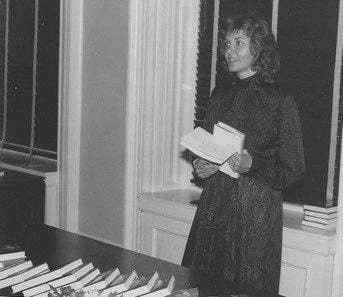Shattering the Glass Ceiling
MARILYN LODEN, 1970S. IMAGE FROM WASHINGTON POST
By Brian Reid
It has been over 40 years since Marilyn Loden coined the term “glass ceiling.” This term, for many women, is just as relevant today as it was when it was first spoken on May 24, 1978.
This “intangible barrier” continues to be a force holding women back from advancement - from obtaining upper-level positions in the workforce, and even from becoming President of the United States. Hillary Clinton pointed out in 2016, “we still have not shattered that highest and hardest glass ceiling, but someday, someone will.”
The hope for this achievement is alive in the U.S., and we are edging ever closer to the 2020 Presidential Election, in which several women are running for the office. 2020 is also the centennial of suffrage, the first glass ceiling women in this nation faced.
Though there are still barriers to break and equal rights are far from a reality, a reminder of just how far we have come in 100 years is necessary. Loden had a fear the term “glass ceiling” would outlive her. It’s true the term still has validity, but the past few decades have shown a shift in thinking when it comes to women in the workforce. The emergence of more women in political office, executive roles, female heroic leads in film and TV as well as the Women’s March in 2017, all point to a shift from limitations women face toward possibilities.
WOMEN’S MARCH, WASHINGTON D.C., 1970. IMAGE FROM LIBRARY OF CONGRESS.
To help children understand the local impact of the advancement of women, Children’s Historical Publishing is offering our new book, Empowered Women: History of Dayton Women and the Dayton Woman’s Club. Our mission centers around helping children “look up” and see the possibilities. Though there may still be a glass ceiling when they do, we want them to see their power to shatter that barrier and become whatever they want to be.
WOMEN’S MARCH, WASHINGTON D.C., 2017. IMAGE FROM WIKIPEDIA.




